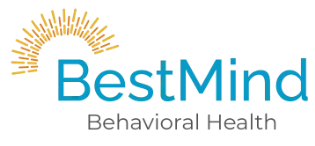TMS vs. ECT
Depression is a common mental health condition that affects millions of people worldwide. While medication is often the go-to option for depression treatment, it doesn’t work for everyone. In some cases, medication may be ineffective or have limited benefits, leaving patients feeling frustrated and hopeless. Studies have found that up to 50% of people treated with anti-depressants fail to find relief.1 If you’re struggling to find relief from depression with medication, alternative treatment options are available.
In this blog, we’ll explore two popular and effective alternative methods for treating depression: Transcranial Magnetic Stimulation (TMS) vs. Electroconvulsive Therapy (ECT). Both treatments have been proven to manage depression effectively. It’s not uncommon for TMS and ECT to be confused with one another, as they’re both non-pharmacological treatments for depression that involve electrical currents. For this reason, we believe it’s important to highlight the differences between the two treatments.
We’ll provide an overview of the benefits, risks, and differences between TMS therapy and ECT. Our goal is to provide information to help make informed decisions about pursuing alternative treatments for depression. Join us as we explore TMS vs. ECT options for depression treatment and discover the potential benefits one has over the other.
What is TMS Therapy?
TMS therapy stands for Transcranial Magnetic Stimulation therapy. This treatment uses magnetic stimulation to target specific areas of the brain that regulate mood. It was introduced in the 1980s, and over the years, it has become a popular alternative treatment for depression – particularly treatment-resistant depression. This treatment has proven itself as well-tolerated and effective. At BestMind, patients who have completed TMS therapy often report significant symptom improvements. This much-needed relief allows patients to live their lives unclouded by depression symptoms.
TMS therapy is considered non-invasive and non-systemic, meaning it does not require surgery or incisions. The magnetic fields used in the treatment do not pass through the entire body or affect anything other than the targeted area of the brain. Compared to other treatments like medication and ECT, TMS therapy has fewer side effects and does not require anesthesia or sedation. However, the treatment often requires a specific medical history to obtain insurance coverage. Some common side effects include headaches, scalp discomfort, and muscle twitching. Overall, TMS therapy is a safe and effective option for those without relief from traditional antidepressant medication.
Studies have found that 83% of patients who undergo TMS therapy experience a positive response, defined as clinically significant relief of depression symptoms. Furthermore, 62% of patients achieve full remission, defined as having no significant symptoms of depression for at least two months and a PHQ-9 score of less than 5.2. These positive patient responses make TMS therapy a promising way to treat depression, especially for those who have not found relief from traditional antidepressant medication.
During TMS therapy, an electromagnetic coil is placed on the patient’s head. This delivers magnetic pulses to targeted regions of the brain, helping stimulate nerve cells and release important neurotransmitters like dopamine and serotonin. Over time, this helps balance brain activity and restore brain function, relieving symptoms of depression and other mental disorders.
TMS is sometimes referred to as repetitive transcranial magnetic stimulation (rTMS) due to the repetitive nature of the magnetic pulses triggered during treatment. Other types of TMS treatment include deep TMS (dTMS), which targets deeper regions of the brain, and accelerated TMS (aTMS), which condenses the treatment into a shorter timeframe.
What is ECT?
Electroconvulsive therapy (ECT) has been around for much longer than TMS therapy, dating back to the 1930’s. ECT is a procedure in which a small electrical current is applied to the brain to trigger a brief therapeutic seizure, which can help alleviate symptoms of severe mental illnesses like depression, bipolar disorder, and schizophrenia. The procedure is typically done under general anesthesia, and a muscle relaxant is used to prevent injury during the seizure.
While ECT treatment is considered effective for severe mental illnesses, it has drawbacks. One of the main concerns with ECT is its potential side effects. Patients may experience confusion, memory loss, muscle aches, and headaches after the procedure. In some cases, these side effects can be long-lasting or permanent. Additionally, ECT can be costly and may not be covered by insurance in some cases. Due to these potential risks and drawbacks, ECT is usually reserved after all other options have been pursued.
Despite these limitations, ECT can effectively treat severe depression and other mental health issues. In fact, studies have found that up to 80% of patients who undergo ECT experience a significant reduction in their symptoms.3 While it may not be the first choice for many patients and healthcare providers, ECT can be a life-saving treatment option for those without relief from other treatments.
TMS vs. ECT— Key Differences
In summary, TMS and ECT are two distinct treatment options for depression. TMS therapy uses magnetic fields to stimulate the nerve cells in the brain, while ECT involves passing electrical currents through the brain. TMS therapy is a non-invasive, safe, and effective option with fewer side effects and does not require anesthesia or sedation. In contrast, ECT is a more invasive treatment with more severe side effects that necessitates anesthesia.
TMS therapy is a promising and modern treatment for depression with high efficacy rates, making it a popular alternative to traditional antidepressant medication. Studies have shown that 83% of patients who undergo TMS therapy experience significant relief of depression symptoms, while 62% achieve full remission.2 TMS therapy is also considered a first-line treatment for depression, unlike ECT, which is typically considered a “last-line treatment” option when all other treatment options have been exhausted due to its potential risks and limitations.
Overall, TMS therapy provides a safer and less invasive alternative for individuals seeking relief from depression. However, ECT may be suggested for severe cases when all other treatments have been unsuccessful.
Which treatment is right for you?
When deciding which treatment option is best for depression, it’s important to consult a healthcare provider who can offer personalized recommendations based on medical history and current condition. Providers can help you explore these different treatment options, such as TMS therapy and ECT, and provide information relevant to your needs.
One way to explore different treatment options is through consultations with healthcare providers. Many providers offer free consultations to patients, which can be used to discuss treatment options and ask questions. This can help patients better understand the different treatment options available to them and make an informed decision about which one is best for their needs.
Here are three tips for patients to get the most out of the consultation process: 1. Write down a list of questions and concerns beforehand to ensure that all relevant topics are covered during the consultation.
2. Be honest and open with the provider about any past experiences with depression treatment and any concerns or reservations about potential treatments.
3. Take notes during the consultation to refer back to later when deciding which treatment option is right for you.
Next Steps
Remember, depression is a treatable condition with effective options beyond medications and talk therapy. When making decisions about your treatment, consult with your healthcare provider and ask questions about the available options. By empowering yourself with knowledge and seeking personalized recommendations, you can make an informed decision about what treatment is best for you. If you have more questions or want to learn more about TMS therapy and ECT, feel free to contact us at BestMind Behavioral Health for a no-cost consultation. We are here to support you on your mental-wellness journey.
References
1. Rush, A. J., Trivedi, M. H., Wisniewski, S. R., Nierenberg, A. A., Stewart, J. W., Warden, D., … Fava, M. (2006). Acute and longer-term outcomes in depressed outpatients requiring one or several treatment steps: A STAR*D report. Journal of Clinical Psychopharmacology, 26(4), 428-436. doi: 10.1097/01.jcp.0000222517.83451.cb
2. Sackeim, H. A., Aaronson, S. T., Carpenter, L. L., Hutton, T. M., Mina, M., Pages, K., Verdoliva, S., & West, W. S. (2020). Clinical outcomes in a large registry of patients with major depressive disorder treated with Transcranial Magnetic Stimulation.Journal of Affective Disorders, 277, 65-74. https://doi.org/10.1016/j.jad.2020.08.005
3. American Psychiatric Association. (2010). The practice of electroconvulsive therapy: Recommendations for treatment, training, and privileging: A task force report of the American Psychiatric Association (2nd ed.). Author.


